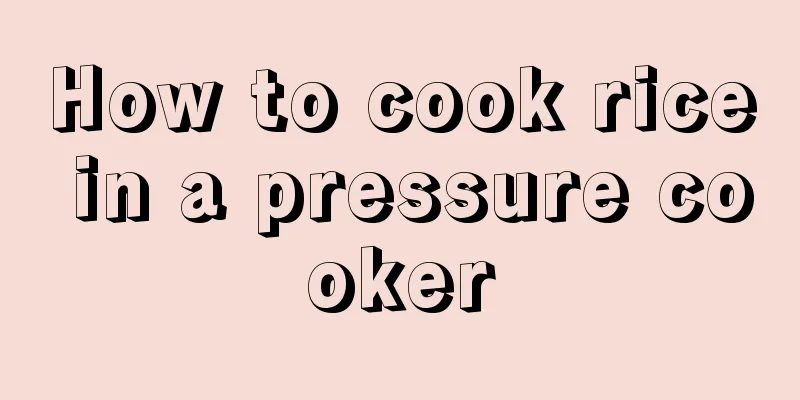How to cook rice in a pressure cooker

|
Although the quality of life is constantly improving nowadays, people miss the taste of their childhood more and more. The meals that today's young people ate when they were young were not cooked in electric rice cookers, but in wood stoves or pressure cookers, and the rice cooked in them tastes particularly good. Cooking rice in a pressure cooker actually requires certain skills, otherwise the rice cooked in the pressure cooker will easily burn. You must also be careful when opening the pressure cooker at the end. Put an appropriate amount of rice in the pressure cooker, usually 5 spoons (a large spoon for cooking) is appropriate, and add water to wash the rice in the pot twice, wash it clean, and pour out the rice water. After washing the rice and pouring out the water, add water to the rice in the pot and shake it slightly to make the rice and water surfaces even and parallel to the bottom of the pot. The amount of water added should be controlled to cover the rice noodles by about half a finger joint (you can also add water according to your personal taste preference, if you like it soft, you can add a little more, if you like it hard, you can add a little less) After adding water and ensuring that the rice and water surfaces are even and level, cover the pot and heat the pressure cooker on the stove at the highest heat. After a few minutes, when the valve on the top of the pressure cooker starts to rotate rapidly and emits obvious white steam, reduce the heat to low and heat on low heat for 3-4 minutes. After 3-4 minutes, turn off the fire on the stove, but you need to wait quietly for the "float" on the handle of the pressure cooker to fall completely before you can open the lid and eat. (If the float does not fall, do not try to open the lid) Precautions for using pressure cooker: 1. Before use, check whether the exhaust hole of the pressure limiting valve is unobstructed. 2. The amount of food and water in the pot must not exceed four-fifths of the pot's capacity, and the amount of water or soup must not be less than 400 ml (about two bowls). 3. When closing the pressure cooker lid, align the lid closing mark and rotate the lid clockwise as shown in the figure until the upper and lower handles are completely overlapped. At this time, it moves to the working position and the float valve is completely exposed. 4. When the pressure limiting valve of the pressure cooker starts to work, turn down the heat and keep the pressure valve able to turn slightly. 5. Before opening the cover, you must wait until the pressure is completely reduced, that is, the valve core of the protective device drops and resets before you can open the cover. Do not force the handle. |
Recommend
How to make braised fried tofu
In life, there are many women who particularly li...
How to make toast banana rolls
Many times, we envy others for having a relative ...
How to make leek, meat and mushroom buns
Learning to cook some common home-cooked dishes a...
How to cook bamboo shoots with bacon
The deterioration of living environment and the i...
How to make American pizza
A beautiful and fulfilling childhood will inevita...
How to make frozen yogurt cheesecake
Nowadays, many people neglect their own health an...
How to make yogurt apricot ice
As a woman, should you learn to cook some decent ...
How to make walnut muffins
Summer has just passed and the food delivery staf...
How to make Chayote, Barley and Pork Rib Soup
You take us to a restaurant to eat, and we almost...
How to make clam cakes
To make a good dish is not as difficult as everyo...
How to make snow vegetable, winter bamboo shoots and tofu soup
People who are in good health are those who know ...
How to make watermelon orange juice
Food shows are very popular nowadays, and I belie...
Can persimmons and beer be eaten together?
Autumn is the harvest season. Many fruits and gra...
How to make big tofu
Sometimes we find that there are always a few peo...
How to make steamed dumplings
We call people who like to eat "foodies"...









